The Allure to Grow Avocado from Seed
In the realm of home gardening, few endeavors offer as gratifying an experience as nurturing an avocado tree from a mere seed to a bountiful bearer of this creamy, nutrient-packed fruit. Avocados, with their rich texture and versatile culinary uses, have surged in popularity, becoming a staple in diets around the globe. This guide embarks on a comprehensive journey, inviting you into the rewarding world of growing your avocado tree, a process that blends the art of gardening with the science of horticulture.

The avocado (Persea americana) is more than just a trendy ingredient; it’s a historical fruit with roots tracing back to early civilizations in Central and South America. Cultivated for thousands of years, avocados have evolved from wild varieties to the much-loved cultivars we enjoy today, such as the buttery Hass and the smooth Fuerte. Each type brings its unique flavor, texture, and growing requirements to the table, offering a fascinating study for the aspiring avocado arborist.
However, growing avocados is not without its challenges. These subtropical trees demand specific climatic conditions, rich, well-draining soil, and careful maintenance to flourish. Yet, the allure of harvesting home-grown avocados right from your backyard or balcony is an irresistible call to many gardeners.
This guide aims to demystify the process, providing a detailed roadmap from seed selection and germination to planting, care, and harvesting. We’ll delve into the environmental preferences of avocado trees, the nuances of soil preparation, watering schedules, and the organic management of pests and diseases.
Beyond the practical advice, this introduction serves as an invitation to explore the deeper benefits of growing your avocado tree. Beyond the obvious joy of picking fresh avocados, this endeavor connects you to the earth, offering lessons in patience, care, and the cycles of nature.
It’s a commitment to sustainability, reducing the carbon footprint associated with transporting avocados across continents. Moreover, it’s a chance to nurture not just a tree, but a new dimension of your home and family life, filled with greenery, shade, and the simple pleasure of watching something grow under your care.
Stay curious, and let this guide be your compass in the adventure of avocado cultivation. Whether you’re a seasoned gardener or a curious newcomer, the journey from seed to tree is a path filled with discovery, challenge, and the ultimate reward of fresh avocados cradled in your hands. Welcome to the comprehensive guide on growing your avocado tree – your green thumb awaits.
Understanding Avocado Trees
The avocado tree, Persea americana, is a testament to the marvels of nature, offering not just delectable fruits but also an insight into the complex web of botanical diversity. Originating from south-central Mexico, the avocado tree has traversed a remarkable journey from ancient, wild varieties to the domesticated forms that grace our tables today. This section delves into the rich history, varied types, and specific environmental needs of avocado trees, laying the foundational knowledge for aspiring growers.

A Brief History of Avocado Trees
The story of the avocado tree begins over 10,000 years ago, with evidence of its cultivation dating back to early Mesoamerican civilizations. Revered by the Aztecs and Mayans not only for its nutritional value but also for its symbolic significance, the avocado has been a continuous presence in human agriculture. Its name, derived from the Nahuatl word “ahuacatl,” has evolved alongside the fruit, mirroring the journey of avocados from the wild, forested regions of Central America to global kitchens.
Types of Avocado Trees
Understanding the types of avocado trees is crucial for any grower, as each variety brings its own set of characteristics, flavors, and growing requirements:
Hass: The most popular variety worldwide, known for its creamy texture and excellent shelf life. The Hass avocado thrives in warm climates and accounts for the majority of avocados consumed globally.
Fuerte: This variety is known as the “strong” avocado, named for its robust nature. Fuerte avocados are slightly less creamy than Hass but are prized for their nutty flavor and good oil content.
Bacon: A variety that withstands cooler climates better than most. Bacon avocados have a smooth, light flavor and a medium oil content, making them versatile in culinary uses.
Reed: Known for its round shape and large size, Reed avocados offer a buttery texture and rich flavor. They are typically in season during the summer months.
Each of these varieties has adapted to specific climatic conditions, with some favoring the tropical climates of their ancestral homes, while others have been bred for resilience in more temperate zones.
Climatic and Soil Requirements
The success of an avocado tree is largely determined by its environment. Here are the key conditions for a thriving avocado orchard:
Climate: Avocado trees flourish in subtropical and tropical climates, requiring temperatures ranging from 60°F to 85°F (15°C to 29°C). They are sensitive to frost and high winds, which can damage the tree and fruit.
Sunlight: Avocado trees need abundant sunlight to produce fruit. A location that receives direct sunlight for most of the day is ideal.
Soil: Well-draining soil is non-negotiable for avocado trees, as their roots are particularly susceptible to rot in waterlogged conditions. A pH level between 6 and 6.5 is optimal for nutrient uptake.
Understanding these factors is the first step in ensuring the healthy growth and productivity of your avocado tree. The journey from a small seed to a fruit-bearing tree is a complex process, influenced by the tree’s genetic makeup, the care it receives, and the environment in which it grows. Armed with knowledge of the tree’s history, varieties, and needs, growers can make informed decisions that pave the way for success in their avocado cultivation endeavors.
Stay engaged as we explore the next steps in this journey, from selecting the right variety for your climate to the intricacies of planting, care, and beyond. The path to growing your avocado tree is filled with learning, patience, and the promise of lush, green foliage and bountiful harvests.
Preparing to Grow Your Avocado Tree
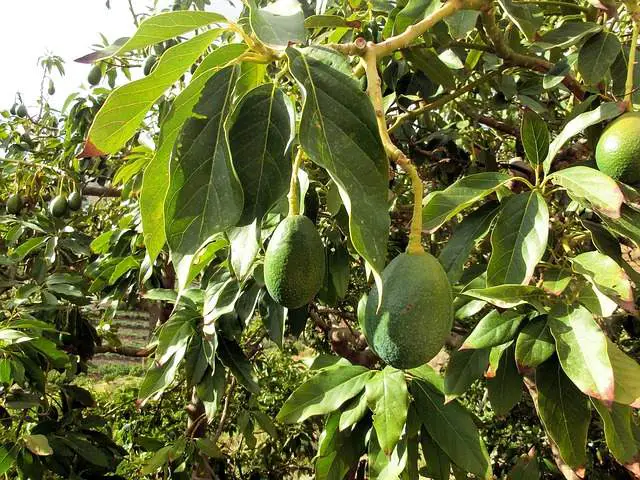
Embarking on the journey to grow your avocado tree is an endeavor that combines passion with patience, offering a uniquely rewarding experience for gardeners. Whether you’re drawn to the allure of fresh, home-grown avocados or the aesthetic appeal of the tree itself, the preparation phase is crucial for ensuring the success of your gardening project. We provide a detailed guide on the initial steps, from choosing the right planting approach to gathering the necessary tools and materials, and preparing the ideal environment for your avocado tree to thrive.
Choosing Between Seed and Sapling
The first decision in your avocado-growing journey is whether to start from a seed or a sapling. Each option has its advantages and considerations:
Seed: Growing an avocado tree from seed can be a fascinating process, especially for educational purposes or as a hobby. It’s cost-effective and provides a sense of accomplishment as you watch the seed sprout and grow. However, trees grown from seeds may take longer to bear fruit (anywhere from 5 to 13 years), and there’s no guarantee the fruit will match the quality of the parent tree.
Sapling: Purchasing a sapling from a nursery can accelerate the fruit-bearing process, with some trees producing fruit in as little as three years. Saplings are often grafted from mature, fruit-producing trees, ensuring the quality and type of fruit. However, this option requires an initial investment and careful transportation to prevent damage.
Tools and Materials
Gathering the right tools and materials beforehand can make the planting process smoother and more enjoyable. Here’s a checklist for aspiring avocado growers:
A high-quality avocado seed or sapling.
Well-draining potting mix (for potted trees) or compost-rich soil.
A pot with drainage holes (if starting indoors or if you’re in a cooler climate).
Gardening gloves to protect your hands.
A shovel or trowel for digging.
A watering can or hose with a gentle spray setting.
Mulch to help retain soil moisture and reduce weed growth.
Selecting the Right Location
Choosing the optimal location is paramount for your avocado tree’s growth and fruit production. Consider the following factors:
Sunlight: Avocado trees require at least 6 hours of direct sunlight daily. Pick a sunny spot in your garden or yard that’s shielded from strong winds.
Soil: The ideal soil for avocado trees is loose, rich in organic matter, and well-draining to prevent root rot. Conduct a soil test to ensure the pH is between 6 and 6.5. If you’re working with heavy or clay-rich soil, consider raising the planting area or opting for a raised bed.
Space: Avocado trees can grow quite large, so it’s important to account for both the height and the canopy’s spread. Ensure there’s enough room for the tree to mature without interfering with buildings, power lines, or other plants.
Preparing Your Soil
Proper soil preparation can significantly impact the health and productivity of your avocado tree. Follow these steps to prepare your planting site:
1. Test and Amend the Soil: Based on your soil test results, amend the soil with organic compost to improve fertility and drainage. Lime or sulfur can adjust the pH if needed.
2. Digging the Hole: When you’re ready to plant, dig a hole three times as wide and just as deep as the root ball of your sapling or seedling. This allows the roots to spread easily.
3. Adding Mulch: After planting, apply a layer of organic mulch around the base of the tree, keeping it a few inches away from the trunk. Mulch helps retain moisture, regulate soil temperature, and reduce weed competition.
Embarking on the avocado tree cultivation journey is an act of patience and dedication. This preparation phase lays the groundwork for a thriving avocado tree that, with proper care and attention, will reward you with bountiful harvests. The meticulous preparation of choosing the right starting point, gathering essential tools, selecting an optimal location, and preparing the soil not only optimizes the growth conditions but also deepens your connection to the earth and the food it bears.
Stay tuned for the next steps in this green adventure, where we’ll explore the nuances of planting your avocado seed or sapling, nurturing its growth, and eventually reap the rewards of your labor.
Planting Your Avocado Seed
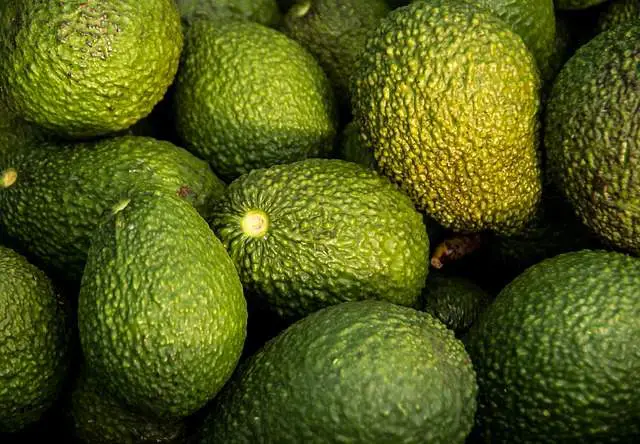
The journey of an avocado from a simple seed to a sprawling tree is nothing short of miraculous. This phase of your avocado cultivation adventure is both exciting and crucial, marking the true beginning of your tree’s life. Planting an avocado seed is a process filled with anticipation and wonder, offering a hands-on connection to the cycle of growth. This section will guide you through the detailed steps of planting your avocado seed, ensuring it has the best start possible. We’ll explore two popular methods: the water suspension method and the direct soil method, each with its unique benefits and considerations.
Understanding the Avocado Seed
Before delving into the planting process, it’s important to understand the avocado seed. Typically, an avocado seed is oval or spherical, with a brown outer layer that protects the embryonic plant inside. One end of the seed is slightly pointed, while the other is flatter; the pointed end is where the sprout will emerge, and the flat end houses the root system. Recognizing these aspects is crucial for successful germination.
Method 1: Water Suspension Method
The water suspension method, often romanticized for its simplicity and beauty, involves suspending the avocado seed in water to encourage root and stem development. Here’s how to do it:
1. Prepare the Seed: Clean the seed gently under lukewarm water, removing any remaining fruit flesh without damaging the brown seed coat. Pat it dry with a clean towel.
2. Identify the Top and Bottom: Locate the pointed end (top) and the flatter, broader end (bottom) of the seed. This orientation is critical for the next steps.
3. Insert Toothpicks: Carefully insert three to four toothpicks around the circumference of the seed at a slight downward angle. These will support the seed on the rim of a water glass or jar.
4. Suspend in Water: Fill a glass or jar with enough water to cover the bottom half of the seed. Place the seed, broad end down, on the rim so that it’s partially submerged.
5. Location and Care: Position the setup in a warm, well-lit spot but out of direct sunlight. Change the water regularly to prevent mold and bacteria growth.
Method 2: Direct Soil Method
For those preferring a more direct approach or looking to avoid transplant shock, planting the avocado seed directly in the soil is an excellent option:
1. Prepare the Seed: As with the water method, clean the seed and identify the top (pointed end) and bottom.
2. Pot and Soil: Choose a pot at least 6-8 inches in diameter with drainage holes. Fill it with a well-draining potting mix, leaving room at the top.
3. Plant the Seed: Plant the seed in the soil with the pointed end up, covering it lightly so that the top half of the seed is exposed above the soil surface.
4. Watering and Location: Water the soil until it’s moist but not waterlogged. Place the pot in a warm area that receives indirect sunlight.
Germination Time and Care
Regardless of the method chosen, avocado seeds can take anywhere from 2 to 8 weeks to sprout. Patience is key during this period. Ensure the environment remains conducive to growth warm, with indirect sunlight and sufficient moisture. Observing the first signs of life as a tiny root emerges and later, a sprout, is a rewarding experience that marks the successful start of your avocado tree’s journey.
Transferring to Soil (If Using Water Method)
Once the seed sprouts and the root system appears robust (typically when roots are a few inches long), it’s time to transfer it to the soil. This step is critical for the continued growth and health of your avocado tree. Carefully remove the seed from the water, remove the toothpicks, and follow the direct soil method steps for planting.
Planting your avocado seed is a foundational step in the rewarding journey of growing an avocado tree. Whether you choose the water suspension method for its educational value and aesthetic or the direct soil method for its natural approach, both paths offer the profound satisfaction of watching life unfold from the palm of your hand. As we move forward in this guide, we’ll explore the next stages of avocado tree care, from sapling to mature tree, ensuring you have the knowledge and tools to nurture your avocado tree to its full potential.
Transplanting and Initial Care
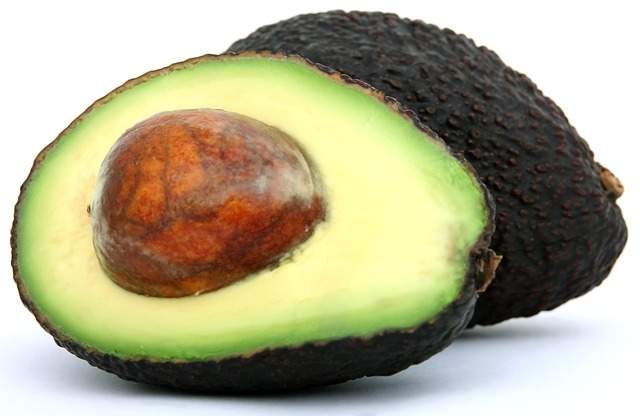
Transitioning your avocado seedling into its new home marks a pivotal moment in the lifecycle of your avocado tree. This phase not only signifies the end of the germination stage but also sets the foundation for healthy growth and future fruit production. Transplanting, if done with care and precision, ensures your seedling adapts well to its new environment, whether it’s a larger container or the open ground.
We will cover the essential steps and care practices to ensure your avocado seedling thrives during and after the transplanting process. Our guide is designed to be both informative and engaging, offering you the best practices rooted in horticultural science while keeping your curiosity piqued about the next stages of your avocado tree’s journey.
When to Transplant Your Avocado Seedling
Timing is everything when it comes to transplanting. Your avocado seedling is ready for transplant once it has developed a strong root system and is about 6-8 inches tall. This usually indicates that the seedling has outgrown its initial container or germination setup and needs more space to expand its roots.
Choosing the Right Location
Whether you’re transplanting to a larger pot or directly into the ground, selecting the right location is critical. Consider these factors:
Sunlight: Choose a location that receives at least 6 hours of direct sunlight daily. Avocado trees thrive in bright, sunny spots.
Wind Protection: Avocado trees are susceptible to wind damage, especially in their early stages. A sheltered location can prevent physical harm and moisture loss.
Soil Quality: The site should have well-draining soil with a pH between 6 and 6.5. If you’re working with heavy clay or sandy soils, amending with organic compost can improve soil structure and fertility.
Transplanting Step by Step
1. Preparation: Before removing your seedling from its current container, water it thoroughly. This helps ease the stress of transplantation and keeps the soil together around the roots.
2. Digging the Hole: Whether in a new pot or the ground, dig a hole twice as wide and just as deep as the root ball of your seedling. This gives the roots ample room to spread out.
3. Transplanting: Gently remove the seedling from its initial container, being careful not to disturb the root ball. Place it in the hole, ensuring the base of the stem is level with the soil surface.
4. Backfilling: Fill the hole with soil, gently tamping down around the base of the seedling to remove air pockets. Water the area well to settle the soil around the roots.
Initial Care After Transplanting
The first few weeks after transplanting are crucial for the establishment of your avocado tree. Here’s how to ensure a smooth transition:
Watering: Keep the soil consistently moist but not waterlogged. Deep, infrequent watering encourages deep root growth, which is vital for the tree’s stability and access to nutrients.
Mulching: Apply a layer of organic mulch around the base of the tree to conserve moisture, regulate soil temperature, and reduce weed competition. Keep the mulch a few inches away from the stem to prevent rot.
Protection: Young avocado trees are sensitive to extreme temperatures and direct sunlight. Consider using a shade cloth during peak sun hours or frost blankets during cold snaps to protect the tree.
Feeding: Wait at least a month before applying any fertilizer to give your tree time to adjust to its new location. When you do start feeding, use a balanced, slow-release fertilizer formulated for young trees.
Monitoring Growth and Health
Regularly inspect your avocado tree for signs of stress, such as wilting leaves, discoloration, or stunted growth. Early detection of issues allows for timely interventions, whether it’s adjusting watering habits, amending soil nutrients, or protecting the tree from pests and diseases.
Transplanting your avocado seedling is a significant milestone in your gardening journey, setting the stage for the next phase of growth. With the right preparation, location, and care, your avocado tree will be well on its way to establishing itself, promising the joys of lush foliage and, eventually, delicious home-grown avocados. As we continue to explore the nuances of avocado tree care, stay engaged and curious, for every step brings you closer to reaping the rewards of your labor and dedication.
Long-Term Care and Maintenance

As your avocado tree takes root and begins its journey toward maturity, the focus of your gardening efforts shifts to long-term care and maintenance. This critical phase in the life of your avocado tree is about fostering robust growth, ensuring optimal health, and ultimately, achieving abundant fruit production. Proper care through the years can make the difference between a flourishing tree and one that struggles to meet its potential.
This section is dedicated to unraveling the complexities of long-term care for your avocado tree, covering essential aspects such as watering, fertilization, pruning, and pest management. Our goal is to keep you informed and engaged, equipping you with the knowledge to cultivate a thriving avocado tree that can serve as a bountiful source of pride and produce for years to come.
Watering Practices for Mature Avocado Trees
Watering is a cornerstone of avocado tree care, with the needs of the tree evolving as it grows. Mature avocado trees have deep root systems that require deep, infrequent watering to encourage further root development and ensure access to moisture during dry periods. The frequency and amount of watering will depend on the tree’s size, the soil type, and the climate, but a general rule is to water deeply enough to wet the entire root zone and then allow the soil to dry out somewhat before watering again. This approach helps prevent root rot, a common issue in avocado trees.
Fertilization for Optimal Growth
Fertilizing your avocado tree is crucial for its growth and fruit production. Mature avocado trees benefit from a balanced fertilizer with nitrogen, phosphorus, potassium, and essential micronutrients like zinc and boron. The key is to apply fertilizer at the right time and in the right amounts, typically in early spring and again in late summer, to support growth cycles and fruit development. Over-fertilizing can be as detrimental as under-fertilizing, so it’s important to follow recommended rates based on the tree’s age and size.
Pruning for Health and Productivity
Pruning is an essential aspect of avocado tree maintenance, serving multiple purposes: removing dead or diseased wood, shaping the tree for better light penetration and air circulation, and encouraging fruit production. The best time to prune is in the late winter or early spring, just before the growth season begins. However, heavy pruning should be avoided as it can reduce fruit yield. Strategic pruning, focused on thinning out the canopy and removing problematic branches, can enhance the tree’s overall health and productivity.
Pest and Disease Management
Keeping your avocado tree healthy involves proactive pest and disease management. Common pests include avocado thrips, mites, and borers, while diseases such as root rot and leaf spot can also pose challenges. Integrated pest management (IPM) strategies that include regular monitoring, cultural controls (such as proper watering and fertilization), and biological controls (using natural predators) can be effective in managing pests and diseases with minimal chemical intervention. When chemical controls are necessary, choosing the least toxic option and applying it according to label directions can minimize harm to beneficial insects and the environment.
Seasonal Care Considerations
Beyond these core aspects of care, understanding and responding to seasonal changes can help ensure the longevity and productivity of your avocado tree. This includes providing extra water during hot, dry periods; applying mulch to conserve moisture and regulate soil temperature; and protecting the tree from frost in colder climates. Each season brings its own set of challenges and opportunities for avocado tree care, and staying attuned to your tree’s needs throughout the year is key to its success.
The journey of nurturing an avocado tree is a long-term commitment that rewards patience and diligent care with the unparalleled satisfaction of harvesting your avocados. Long-term care and maintenance are about more than just routine; they’re about developing a deep understanding of your tree’s needs and responding with the right practices to support its health and productivity.
As you continue to tend to your avocado tree, remember that each tree is unique, and the care it requires may evolve. Stay curious, observant, and responsive to your tree’s signals, and you’ll cultivate not only a thriving avocado tree but also a rewarding, enduring connection to the natural world.
Pest and Disease Management for Avocado Tree
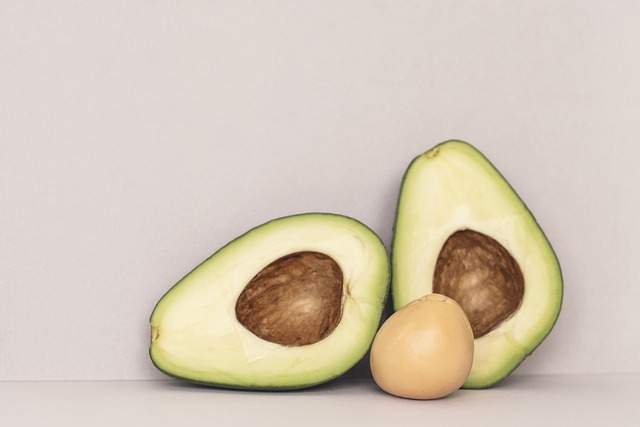
Successfully growing an avocado tree is a fulfilling endeavor, yet it requires vigilance and proactive management to protect it from the myriad pests and diseases that can compromise its health and productivity. This section delves into the essential strategies for identifying, preventing, and managing the common pests and diseases that afflict avocado trees.
We aim to equip you with the knowledge and tools needed to keep your avocado tree thriving, ensuring a healthy growth environment and a bountiful harvest. With a focus on organic and integrated pest management (IPM) approaches, we’ll guide you through the best practices to safeguard your precious tree, keeping the content engaging and informative to maintain your curiosity and commitment to avocado tree care.
Understanding Avocado Tree Pests and Diseases
Avocado trees, like all plants, are susceptible to specific pests and diseases, some of which can significantly affect their growth and fruit production. Familiarizing yourself with these challenges is the first step toward effective management:
Pests: The most common pests include avocado lace bugs, mites, thrips, and the avocado root weevil. Each pest has its unique mode of damage, from leaf damage to affecting the tree’s root system.
Diseases: Avocado trees can be affected by several diseases, including root rot (caused by Phytophthora cinnamomi), anthracnose, and stem-end rot. These diseases often stem from fungal infections and can be exacerbated by poor environmental conditions.
Preventive Measures
Prevention is the cornerstone of effective pest and disease management. Here are key strategies to keep your avocado tree healthy:
Proper Planting and Site Selection: Ensure your tree is planted in well-draining soil and in a location that meets its sunlight and spacing requirements to reduce stress and vulnerability.
Soil Health: Maintain soil health through regular amendments with organic compost and appropriate fertilization, which can enhance the tree’s resistance to pests and diseases.
Water Management: Overwatering can contribute to root rot and other fungal diseases. Implementing a watering schedule that allows the soil to dry slightly between waterings can prevent these issues.
Regular Monitoring: Regular inspection of your avocado tree can help detect early signs of pest infestation or disease, allowing for timely intervention.
Integrated Pest Management (IPM) Approaches
IPM emphasizes using a combination of biological, cultural, physical, and chemical methods to manage pests and diseases with minimal environmental impact:
Biological Control: Utilize natural predators or parasites of the pests harming your avocado tree. For example, introducing beneficial insects that prey on mites or thrips can help control their populations.
Cultural Practices: Implement crop rotation, sanitation, and pruning techniques to disrupt the life cycle of pests and diseases. Removing fallen leaves and debris reduces fungal spore populations and pest-hiding spots.
Physical Barriers: Use physical barriers, such as nets or row covers, to protect young trees from pests. Soil solarization can also be effective in reducing soil-borne pathogens.
Chemical Control: As a last resort, and with careful consideration for the environment, targeted chemical treatments may be used. Organic options, such as neem oil or copper-based fungicides, can provide control with fewer side effects than synthetic chemicals.
Managing Specific Pests and Diseases
Detailed management strategies for common pests and diseases include:
Avocado Lace Bug: Monitor for early signs of infestation, such as yellowing leaves, and use insecticidal soap or neem oil as a treatment.
Root Rot: Improve drainage, reduce watering, and consider applying phosphonate fungicides to infected trees.
Thrips: Use reflective mulches to deter thrips and apply insecticidal soaps or oils if necessary.
In conclusion, effective pest and disease management for avocado trees requires a multifaceted approach, combining preventive measures with targeted interventions. By staying informed, monitoring your trees regularly, and adopting IPM strategies, you can ensure the health and productivity of your avocado tree for years to come. This journey of vigilance and care not only contributes to the success of your gardening endeavors but also fosters a deeper connection to the natural world and its intricate ecosystems.
Harvesting Your Avocados
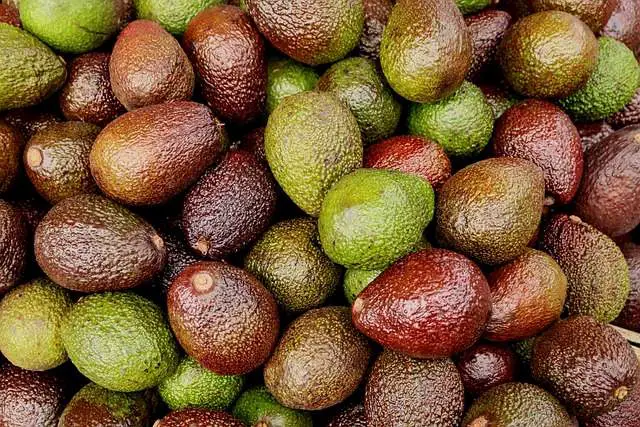
The moment of harvesting avocados is a culmination of months, or even years, of diligent care, patience, and anticipation. It’s the rewarding finale to the agricultural symphony that is avocado cultivation. This section is dedicated to guiding you through the intricacies of harvesting your avocados, ensuring you pick your fruit at the perfect time for optimal flavor and ripeness.
We will delve into the signs that indicate readiness for harvest, the correct method to pick avocados without causing harm to the tree, and the best practices for storing and ripening your avocados post-harvest. Engaging and informative, this guide aims to make the harvest season an exciting and fruitful endeavor, optimizing your hard-earned yield for the best possible culinary experiences.
Understanding Avocado Maturity and Ripeness
Avocados are unique in their ripening process; they do not ripen on the tree. Instead, they mature on the tree but only ripen once harvested. This distinctive trait necessitates a keen eye and knowledge to determine when they are mature enough to be picked.
Maturity Signs: Look for size and skin color as primary indicators of maturity. Each variety has a typical mature size and a change in skin color (from bright green to darker green or almost black in some varieties) when ready.
Seasonality: Be aware of the harvest season for your avocado variety. Most types have a specific harvesting window, which can vary based on your climate and the tree’s health.
Harvesting Technique
The method you use to harvest your avocados can significantly impact the quality of the fruit and the health of the tree.
When to Harvest: Test for maturity by picking a few fruits and allowing them to ripen indoors. If they soften without shriveling within a week or two, the tree is ready for harvest.
How to Harvest: Use a pole pruner or a long-handled fruit picker for tall trees to gently twist the fruit off the tree. For lower branches, handpick by gently twisting the fruit until it comes away from the stem. Always leave a short stem attached to the fruit to prevent damage and ensure proper ripening.
Post-Harvest Handling
Proper post-harvest handling is crucial to maximize the shelf life and quality of your avocados.
Ripening Process: Store harvested avocados at room temperature until they reach the desired ripeness. This can take anywhere from a few days to over a week, depending on the initial maturity and storage conditions.
Speeding Up Ripening: To hasten ripening, place avocados in a paper bag with an apple or banana. The ethylene gas produced by these fruits accelerates the ripening process.
Storage for Longevity: Once ripe, avocados can be stored in the refrigerator to slow further ripening. This can extend their usability by several days to a week.
Harvesting your avocados is more than just the physical act of picking fruit; it’s a nuanced process that blends timing, technique, and post-harvest care to ensure the fruits of your labor are enjoyed at their peak. This guide aims to equip you with the knowledge to navigate this final stage of avocado cultivation successfully, turning each harvest into a celebration of flavor, nutrition, and the satisfaction of home-grown produce. As you savor the taste of your avocados, remember the journey from seed to harvest, a testament to the rewards of gardening with care and dedication.
Dealing with Common Problems in Avocado Cultivation
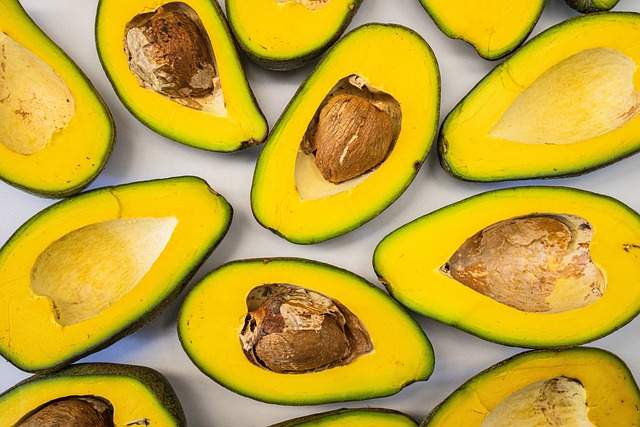
Growing avocado trees is a journey filled with learning and occasional challenges. Even with meticulous care, gardeners may encounter issues affecting the health and productivity of their trees. This section aims to arm you with the knowledge to identify, understand, and address common problems encountered in avocado cultivation. From diagnosing symptoms of distress to implementing effective solutions, we delve into the art and science of troubleshooting in the avocado orchard. Engaging and rich in detail, this guide seeks to turn obstacles into opportunities for growth, ensuring that your avocado trees continue to thrive under your stewardship.
Identifying and Addressing Nutrient Deficiencies
Avocado trees, like all plants, require a balanced diet of nutrients to grow healthily and produce fruit. Symptoms such as yellowing leaves, stunted growth, or poor fruiting can indicate nutrient deficiencies.
Nitrogen Deficiency: Characterized by yellowing and thinning of the older leaves. Enhance soil fertility with organic compost or a balanced, slow-release fertilizer formulated for fruit trees.
Potassium Deficiency: Signs include yellowing of leaf edges and tips, followed by browning and leaf drop. Apply a potassium-rich fertilizer to correct this deficiency.
Iron Deficiency: Manifests as interveinal chlorosis (yellowing between the veins of new leaves), corrected by applying chelated iron directly to the soil or foliage.
Managing Water-Related Issues
Both under-watering and over-watering can lead to problems with avocado trees, impacting their growth and fruit production.
Under-Watering: Symptoms include wilting, dry leaves, and sunburned fruit. Establish a regular watering schedule, ensuring deep, infrequent watering to encourage deep root development.
Over-Watering: This can cause root rot, indicated by yellowing leaves, soft roots, and a decline in tree health. Improve drainage around the tree and adjust watering practices to allow the soil to dry out between watering sessions.
Combatting Pest Infestations and Disease
Pests and diseases can significantly impact the health of avocado trees if not promptly managed.
Avocado Lace Bug: Causes mottled, discolored leaves, leading to reduced vigor. Manage with insecticidal soap or neem oil, focusing on the undersides of leaves where bugs congregate.
Root Rot (Phytophthora cinnamomi): A fungal disease causing wilting and death of the tree. Improve soil drainage, reduce watering, and apply fungicides specifically labeled for avocado root rot control.
Addressing Environmental Stress
Environmental factors such as temperature extremes, wind, and inadequate sunlight can stress avocado trees, affecting their growth and productivity.
Frost Damage: Protect young trees with frost cloths or by mulching heavily around the base to insulate roots during cold snaps.
Wind Damage: Plant windbreaks or install stakes and ties to support young trees in windy areas.
Sunburn: Protect exposed trunks and branches with white, water-based interior latex paint diluted with water, which reflects sunlight and reduces the risk of sunburn.
Dealing with common problems in avocado cultivation is an essential skill for every gardener. By staying observant, acting promptly to address issues, and applying best practices tailored to the specific needs of your avocado trees, you can navigate the challenges of avocado cultivation with confidence. Remember, every problem is an opportunity to learn and grow, both for you as a gardener and for your avocado trees. Armed with this knowledge, you’re well-equipped to ensure the health, vitality, and productivity of your avocado orchard for seasons to come.
Benefits of Growing Your Own Avocado Tree

Embarking on the journey of growing your avocado tree is not just a venture into gardening; it’s a step towards sustainable living, enriched health, and the joy of harvesting your produce. This section highlights the myriad benefits of nurturing an avocado tree in your garden or home space. From the nutritional bounty avocados offer to the environmental impact and the economic advantages, we delve into the reasons why cultivating these green treasures can be a rewarding endeavor. Engaging and thorough, this guide aims to illuminate the multifaceted perks of avocado cultivation, inspiring you to plant not just a tree but a legacy of wellness, sustainability, and abundance.
Nutritional and Health Benefits
Avocados are a powerhouse of nutrients, offering more than just a delicious taste. They are rich in vitamins (K, C, B5, B6, E), folate, and more potassium than bananas. The monounsaturated fats in avocados are heart-healthy, while the fiber supports digestion. Growing your avocados ensures you have a steady supply of this superfood, ready to enhance your diet and health.
Environmental Impact
Cultivating an avocado tree contributes positively to the environment. Trees absorb carbon dioxide and release oxygen, making your garden a mini carbon sink. They also promote biodiversity, offering a habitat for various birds and beneficial insects. By growing avocados at home, you reduce your carbon footprint associated with transporting food over long distances, contributing to a healthier planet.
Economic Advantages
While avocado prices fluctuate due to demand and agricultural conditions, growing your own can offer significant savings over time. The initial investment in a tree and its care can yield a generous return in the form of bountiful harvests. Homegrown avocados mean fewer trips to the grocery store and savings on your food bill, making it an economically wise choice for enthusiasts of this versatile fruit.
Educational Opportunities
For families and individuals alike, the process of growing an avocado tree from seed to fruit-bearing maturity is a valuable educational experience. It offers lessons in patience, care, and the wonders of plant biology. Observing the growth and development of your avocado tree can foster a deeper connection to the food you eat and an appreciation for the complexities of nature.
Aesthetic and Wellness Benefits
An avocado tree is not only productive but also aesthetically pleasing. Its lush, green canopy can transform any space into a verdant oasis, contributing to the overall beauty of your home garden. Moreover, the act of gardening itself is a form of physical exercise and has been shown to reduce stress, promote relaxation, and enhance mental well-being. The presence of an avocado tree can thus be a source of both visual delight and personal health.
Culinary Creativity
Having access to fresh avocados can inspire culinary exploration, from crafting the perfect guacamole to experimenting with avocados in smoothies, salads, and even desserts. The freshness of homegrown avocados is unparalleled, offering a taste and texture that supermarket varieties often lack.
In conclusion, the benefits of growing your avocado tree extend well beyond the simple pleasure of harvesting fruit. It’s an investment in your health, your environment, your wallet, and your culinary adventures. This guide hopes to illuminate the myriad advantages of this rewarding endeavor, encouraging you to take the first step toward avocado cultivation. With patience and care, your avocado tree will grow, flourish, and bring a multitude of benefits to your life and home.
Advanced Tips and Tricks for Cultivating Avocado Trees
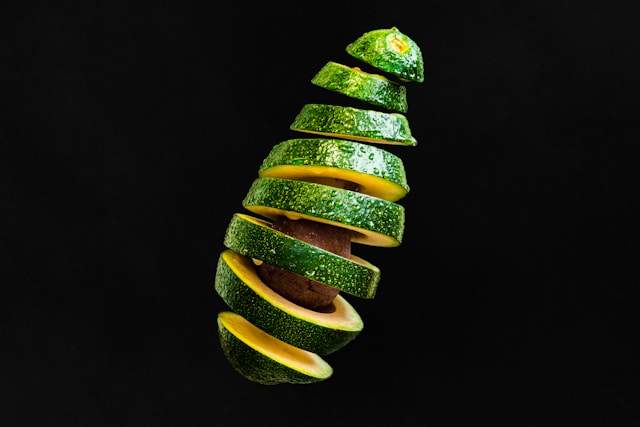
As you delve deeper into the world of avocado cultivation, mastering the basics becomes just the beginning. Elevating your gardening practice with advanced tips and tricks can enhance the health, yield, and resilience of your avocado trees, turning a fruitful hobby into a passionate expertise. This section is crafted to provide seasoned gardeners and enthusiastic beginners alike with sophisticated techniques and insights that go beyond conventional care.
From optimizing pollination to mastering the art of grafting and creating the perfect microclimate, these advanced strategies are designed to unlock the full potential of your avocado orchard. Engaging, informative, and rich with expert knowledge, this guide aims to inspire and challenge you to achieve new heights in your avocado cultivation journey, ensuring that every tree under your care thrives and produces bountifully.
Optimizing Pollination for Higher Yields
Avocado trees are unique in their flowering behavior, classified into Type A and Type B based on their pollination patterns. To maximize fruit production, consider planting both types in close proximity to enhance cross-pollination. Additionally, attracting natural pollinators such as bees and butterflies with companion planting can significantly increase your tree’s pollination rates and fruit set.
Mastering Grafting Techniques
Grafting is a powerful technique to propagate avocado trees, ensuring that the new plants bear the same quality of fruit as the parent tree. Learning to graft can also allow you to grow multiple avocado varieties on a single tree, optimizing space and extending the harvesting season. Experiment with different grafting techniques, such as bud grafting or cleft grafting, to find what works best for your trees and climate.
Creating a Microclimate
Avocado trees thrive in specific environmental conditions, but with a bit of ingenuity, you can create microclimates that protect your trees from extreme weather. Use strategic planting, windbreaks, shade cloth, or greenhouses to moderate temperature, wind, and sunlight exposure. This can help you cultivate avocados even in less-than-ideal climates, extending their geographical growing range.
Soil Health and Fertility Management
Advanced soil management involves more than just regular composting and mulching. Implementing a soil health regime that includes cover cropping, green manures, and regular soil testing can significantly improve the nutrient availability and structure of the soil, leading to healthier trees and better yields. Tailor your soil amendments based on specific nutrient deficiencies identified through soil tests.
Water Management and Irrigation Efficiency
Efficient water use is crucial in avocado cultivation, especially in regions prone to drought. Invest in drip irrigation systems for targeted watering, and consider using greywater systems where applicable. Mulching and soil amendments can also enhance soil water retention, reducing the need for frequent watering.
Pest and Disease Management with Integrated Approaches
Beyond conventional pest and disease control measures, advanced gardeners can explore integrated pest management (IPM) strategies. These might include biological control agents, habitat manipulation to encourage beneficial predators, and the use of resistant avocado varieties. Such approaches can sustainably manage pests and diseases while minimizing harm to the environment.
Utilizing Technology for Precision Gardening
Leverage technology to monitor and optimize the conditions for your avocado trees. Soil moisture sensors, weather stations, and plant health apps can provide valuable data, allowing you to make informed decisions about watering, fertilization, and pest control.
In conclusion, advancing your avocado cultivation practices requires a blend of traditional knowledge, innovative techniques, and a willingness to experiment. By adopting these advanced tips and tricks, you can enhance the health, productivity, and sustainability of your avocado orchard. Embrace the challenge and enjoy the journey of becoming an expert avocado gardener, ready to tackle any obstacle with confidence and skill.
Cultivating Success in Your Avocado Orchard
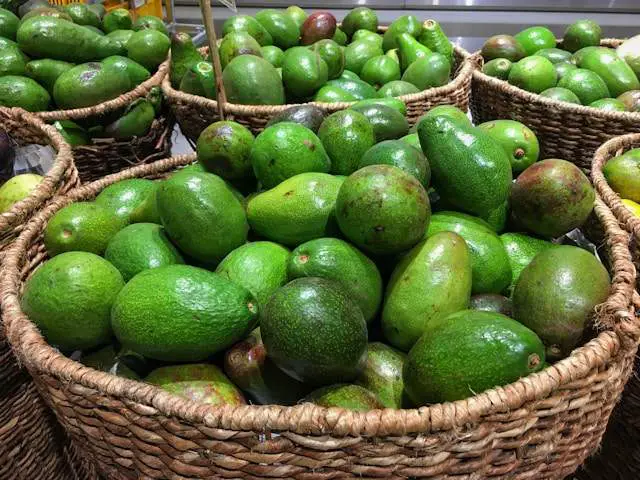
As we reach the culmination of our comprehensive guide on growing avocados, it’s clear that cultivating these lush, fruitful trees is both an art and a science. From the initial steps of understanding avocado varieties and their specific needs to mastering the planting process, and navigating the complexities of care, pest management, and harvesting, each phase of the journey has been rich with opportunities for learning and growth.
This guide has aimed to equip you with the knowledge, strategies, and insights needed to transform your gardening endeavors into a thriving avocado orchard, capable of yielding bountiful harvests. Engaging, detailed, and infused with expert advice, our exploration into the world of avocado cultivation has been designed to ignite your passion and curiosity, encouraging you to delve deeper into the rewarding practice of gardening.
Reflecting on the Journey
Reflecting on the journey of growing an avocado tree from a mere seed to a fruit-bearing marvel reveals the profound connection between the gardener and nature. It’s a process that teaches patience, resilience, and the joy of nurturing life. The challenges faced along the way, from pest invasions to environmental stresses, are not merely obstacles but lessons that hone our skills and deepen our understanding of the delicate balance within ecosystems.
The Rewards of Perseverance
The rewards of cultivating your avocado tree extend beyond the tangible fruits harvested. They encompass the nutritional benefits of fresh, organically grown produce, the environmental contributions of adding another tree to the planet, and the economic savings of home-grown versus store-bought avocados. Moreover, the process itself offers invaluable educational experiences, aesthetic pleasures, and the therapeutic benefits of engaging with the soil and plants.
A Call to Green Thumbs
This guide serves as a call to action for green thumbs, aspiring gardeners, and environmental enthusiasts alike. The journey of growing avocados is a testament to the impact that dedicated care and informed cultivation can have on our lives and the world around us. It encourages a move towards sustainable living, fostering a deeper appreciation for the food we consume and the intricate web of life that sustains it.
Embracing Future Challenges
As you move forward, armed with the knowledge and techniques shared in this guide, embrace the challenges and joys that come with avocado cultivation. The path to gardening success is paved with experimentation, adaptation, and continuous learning. Remember, each avocado tree grown adds not only to the beauty and bounty of your garden but also contributes to a healthier, greener planet.
In conclusion, growing avocados is more than just a hobby; it’s a journey towards sustainability, self-sufficiency, and a deeper connection with the natural world. Whether you’re nurturing your first seedling or managing a burgeoning orchard, the adventure of avocado cultivation is endlessly rewarding. We hope this guide has inspired you to embark on or continue your gardening journey with enthusiasm and confidence, ready to reap the many benefits that await in your backyard oasis.

